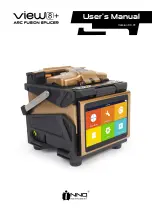
8
Filler Wire
Like MIG welding, Tig welding generally requires the use of a filler wire. Unlike Mig welding,
this filler wire is fed into the molten weld puddle by hand. The filler wire must be chosen to
correctly match the material and alloy you will be welding.
The diameter of the filler wire is based on the thickness of the material you will be welding. For
example, if you are welding something which is 1/16" thick, then you would probably want to use
a filler wire which is 1/16" thick. If you are welding something 1/4" thick, then you would want
to use a larger diameter filler wire than you used when welding 1/16" material, say 1/8" to 5/32".
HTP has the following filler wire available in 1 lb tubes which are sealed to prevent oxidation.
4043-1/16-1
4043 Alloy Aluminum Wire 1/16" diameter x 36’ length
1 lb Tube
4043-3/32-1
4043 Alloy Aluminum Wire 3/32" diameter x 36’ length
1 lb Tube
5356-1/16-1
5356 Alloy Aluminum Wire 1/16" diameter x 36’ length
1 lb Tube
5356-3/32-1
5356 Alloy Aluminum Wire 3/32" diameter x 36’ length
1 lb Tube
308L-1/16-1
308L Alloy Stainless Steel Wire 1/16" diameter x 36" length
1 lb Tube
70S6-1/16-1
ER70S-6 Steel Wire 1/16" diameter x 36" length
1 lb Tube
80SD2-1/16-1
ER80SD-2 Steel Wire 1/16" diameter x 36" length
1 lb Tube
Quick Set Up
1. Welding Mode in 2T for foot pedal. Welding Mode in 4T
for hand amp control.
2. Steel welding AC off – Aluminum Welding AC on
3. Slope down – 0.1 seconds
4. Final Current –1%
5. Post Gas Flow – 5 Sec
6. Frequency – 200 Hz for aluminum. Not applicable for steel.
7. Balance – 60% for aluminum. Not applicable for steel.
8. Local/Remote switch in Remote
9. Pulse off
Summary of Contents for Invertig 200
Page 14: ...13 HTP Invertig 200 Parts Breakdown...
Page 20: ......






































